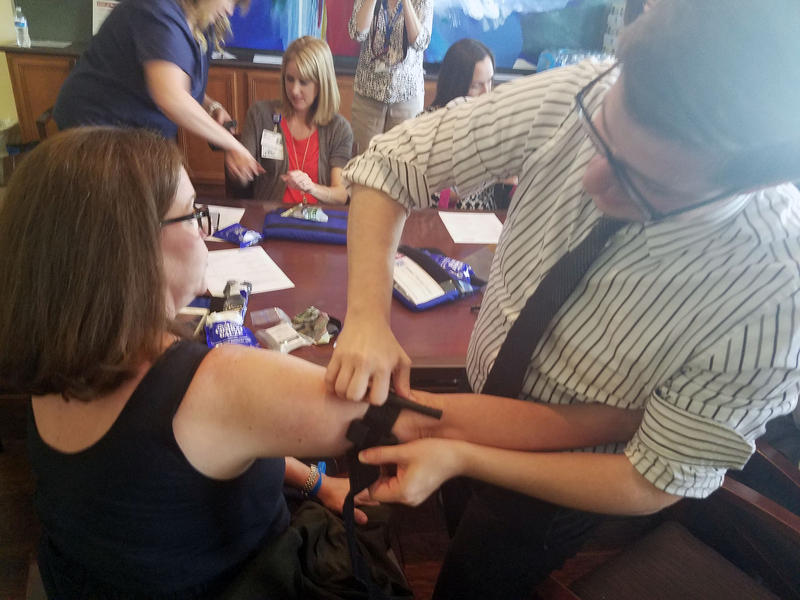From KERA News:
Amanda Stallings fastened a tourniquet onto her co-worker Michael Overton, looping it around his bicep, two inches above his elbow. She tightened a black strap, like a belt, and turned a plastic lever until Overton let out a strained yelp. “That’s good!” he said in between her apologies.
Putting on a tourniquet is one thing she hopes she’ll never have to do outside this conference room.
Stallings is not a medical professional. In fact, she’s never even touched a tourniquet before. She’s executive director of the John Peter Smith Foundation in Fort Worth. She was taking a course in bleeding control as part of a national program called “Stop the Bleed,” piloted in Fort Worth by JPS Health Network.
It’s not like in the movies
“There were a lot of takeaways, a lot of misconceptions that were dispelled,” Stallings said.
Like how you have to stuff gauze deep into an open wound to control bleeding – not just put pressure on it – and how everyday items can’t be tightened enough to use as tourniquets.
“I didn’t know you couldn’t use a belt or a shoelace, or ripping up a T-shirt and tying it around an arm, to act as a tourniquet,” Stallings said.
It’s the stuff you see in the movies, she said. And the goal of “Stop the Bleed” is to not only put those myths to rest, but to also arm everyday people with the knowledge and skills they can use in an emergency: a car crash, a mass shooting, even a terrorist attack.
Doctors say when it comes to trauma, bleeding out is the most preventable cause of death – and it typically happens before patients even make it to the hospital. With a rise in multiple-casualty events like the recent shootings in Washington and Houston and stabbings in Minnesota, one program aims to change the role of bystanders.















